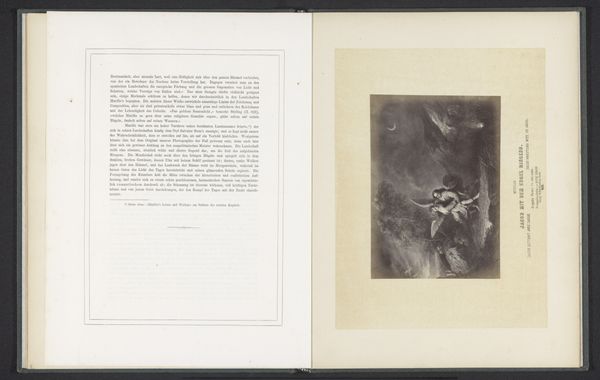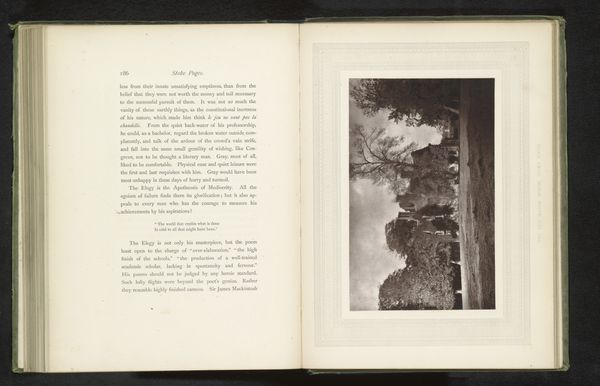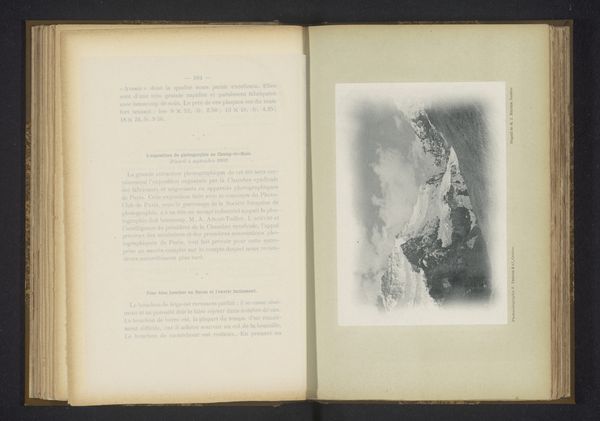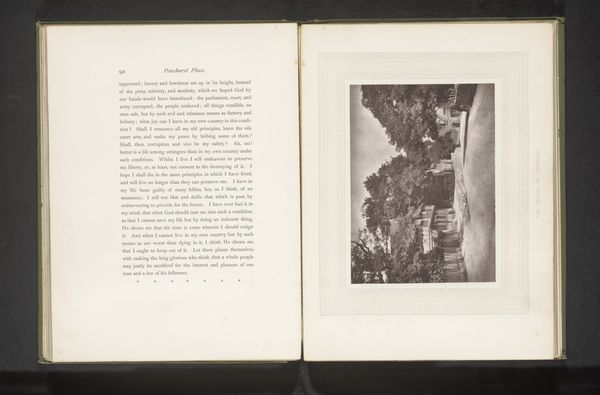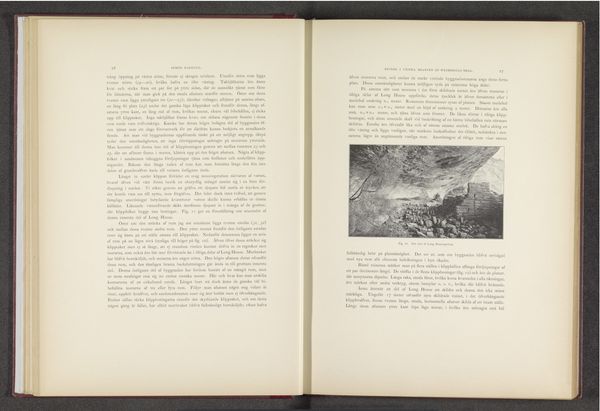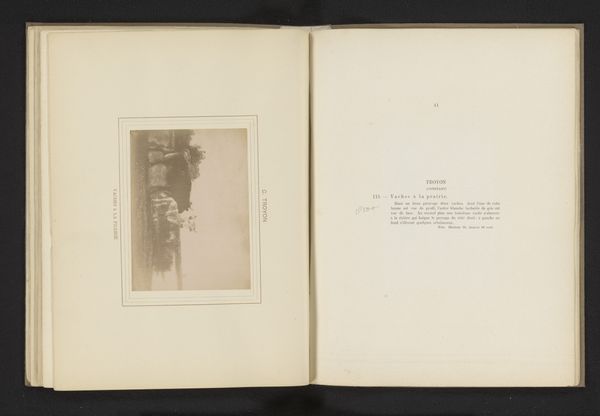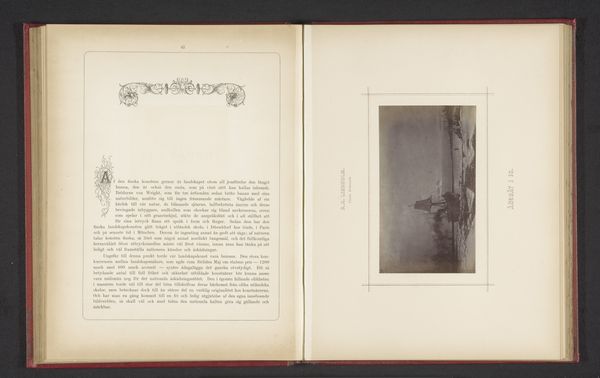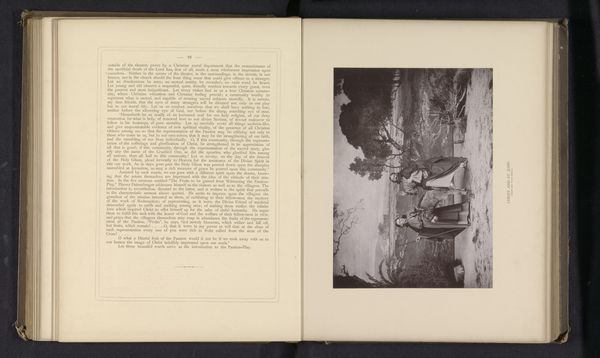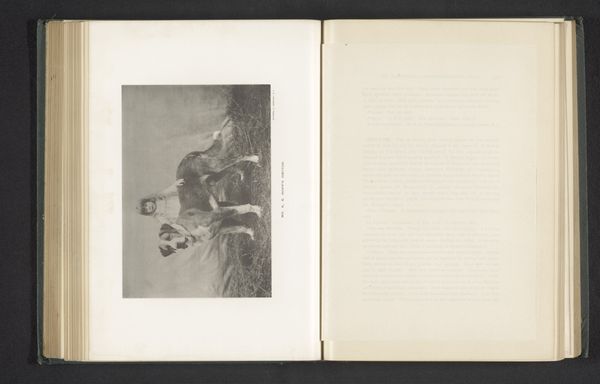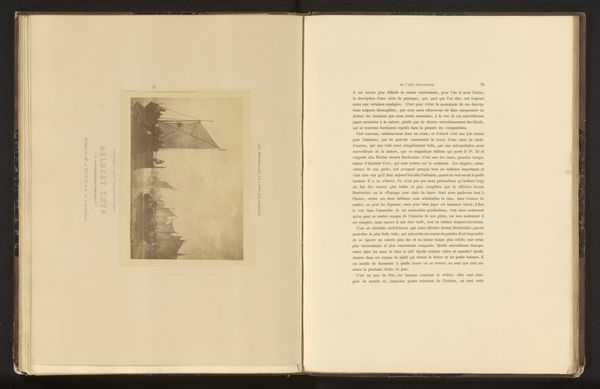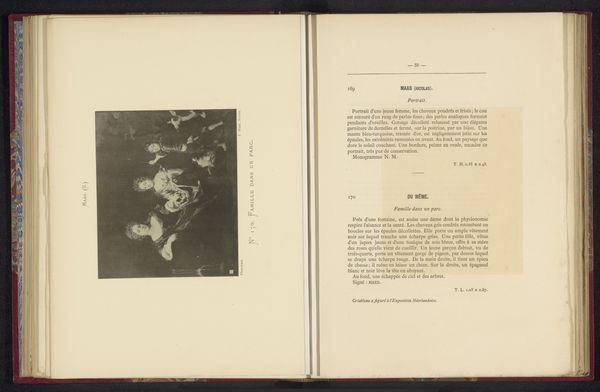
Fotoreproductie van een prent naar een schilderij van de geboorte van Maria door Bartolomé Esteban Murillo before 1860
0:00
0:00
Dimensions: height 100 mm, width 198 mm
Copyright: Rijks Museum: Open Domain
Editor: So, this is a photographic reproduction of an engraving, made before 1860, after Bartolomé Esteban Murillo’s painting, "The Birth of Mary." The scene is really dynamic, lots of people swirling around this central figure of the newborn Mary. How do you interpret this work, beyond the obvious religious context? Curator: It’s fascinating to consider this image not just as a depiction of a religious scene, but as a cultural artifact that reflects specific power structures of its time. Consider the historical context: Murillo, a celebrated Baroque painter in 17th-century Spain, producing religious works that were intended to reinforce the values and social hierarchies of the Catholic Church and the Spanish monarchy. How does reproducing this through engraving and photography shift the meaning and access? Editor: That's a great point. I guess making prints allowed more people to view it, expanding its reach. But how does the shift in medium impact the meaning itself? Curator: Think about the power dynamics at play here. The Church commissions the original painting, controlling the narrative around the Virgin Mary and, by extension, ideas about female virtue, piety, and obedience. Reproduction alters that control somewhat. While it expands access, consider who controls the reproduction, and who is being granted this access? How might access shift based on class or gender? Editor: It’s interesting to think about the reproduction process itself, not just the original painting, and how it can reinforce certain values while potentially opening it up to broader interpretation. Curator: Exactly! The choices of what art to reproduce, and how, always tell us something about the priorities and perspectives of those in power. By engaging with these works critically, we can uncover a complex web of historical, social, and artistic forces that shaped our understanding of art. Editor: I’ve never thought about reproductions in that way, as having their own social and political layers. Thank you!
Comments
No comments
Be the first to comment and join the conversation on the ultimate creative platform.
